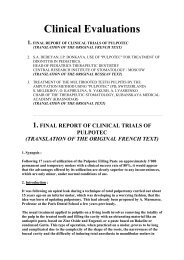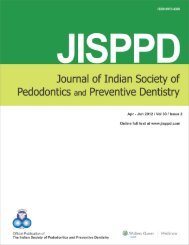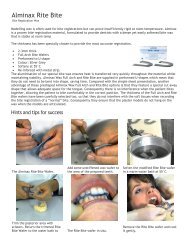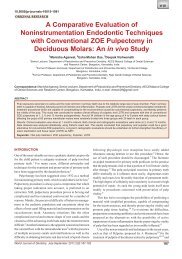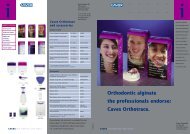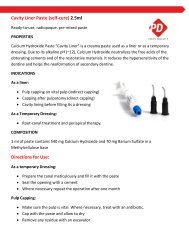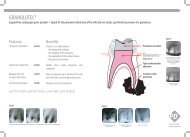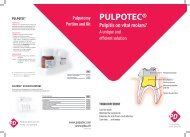REFLECT
View File - universaldental.com.pk
View File - universaldental.com.pk
- No tags were found...
You also want an ePaper? Increase the reach of your titles
YUMPU automatically turns print PDFs into web optimized ePapers that Google loves.
04<br />
Dental medicine<br />
Nano-technology<br />
in the anterior region<br />
Creating aesthetic direct anterior restorations with a nano-optimized composite<br />
Dr Arun Rajpara, Valsad/India<br />
Today, aesthetic dentistry is facing major challenges.<br />
When deciding on the feasibility of a case, clinicians<br />
need to take all physiological aspects into consid -<br />
eration. However, patient satisfaction is also increas -<br />
ingly being looked to as an indicator of positive outcomes<br />
and restorative quality and the patient is<br />
regarded as both a supporter and critic.<br />
A holistic treatment approach is required in order to achieve<br />
a result that mimics natural aesthetics and meets patient<br />
expectations. Not only the smile line needs to be taken<br />
into account, but also the contours of the gingiva and the<br />
incisal edges. From treatment planning to the actual fabrication<br />
of the restoration, composite restoratives offer a<br />
wide array of options and procedures to choose from,<br />
allowing dentists to achieve the desired results.<br />
Since the advent of the acid-etch bonding technique,<br />
which was introduced in 1955, clinicians have seen a revolution<br />
occur in composite materials science and technology.<br />
The development of hydrophilic dentin bonding agents<br />
has opened up a whole new range of restorative possibil -<br />
ities. Modern composite/adhesive systems offer significant<br />
advantages over traditional systems as they allow minimally<br />
invasive preparation techniques to be applied.<br />
Consequently, sound tooth structure can be preserved.<br />
The objective of this article is to present the clinical application<br />
of the new Tetric N-Ceram/Flow/Bond in clinical<br />
cases. The rationale behind the clinical technique and<br />
intricate application methods are discussed.<br />
Clinical case<br />
A 16-year-old male patient presented to our surgery with<br />
large cervical and proximal carious lesions in all upper and<br />
lower anterior teeth (Figs 1 and 2). All these defects were<br />
surrounded by white hypo-calcified enamel lesions. The<br />
defects had been restored in the past but the restorations<br />
had failed over time. Clinically, chronic gingival inflammation<br />
and gingival hyperplasia with occasional bleeding in<br />
the marginal areas was observed.<br />
Fig 1 Initial situation with carious lesions in the maxillary and<br />
mandibular anterior teeth and inflammation of surrounding gingival<br />
tissues, compromising the aesthetics of the patient’s smile<br />
Fig 2 Close-up view of the maxillary incisors<br />
After proper evaluation, it was decided that good gingival<br />
health and contour had to be established first. After<br />
thorough prophylaxis treatment under local anesthesia,<br />
deep gingival scaling and gingival re-contouring was performed.<br />
The patient was instructed in proper brushing<br />
and plaque control measures with Cervitec Gel ® at home<br />
to re-establish gingival health.<br />
Reasonable gingival health was achieved after about ten<br />
days, so that the restorative treatment could be started.<br />
After gingival retraction, the carious tissue was completely<br />
excavated with high-speed diamond burs and slow-speed<br />
round burs. The soft, hypo-calcified enamel was also



